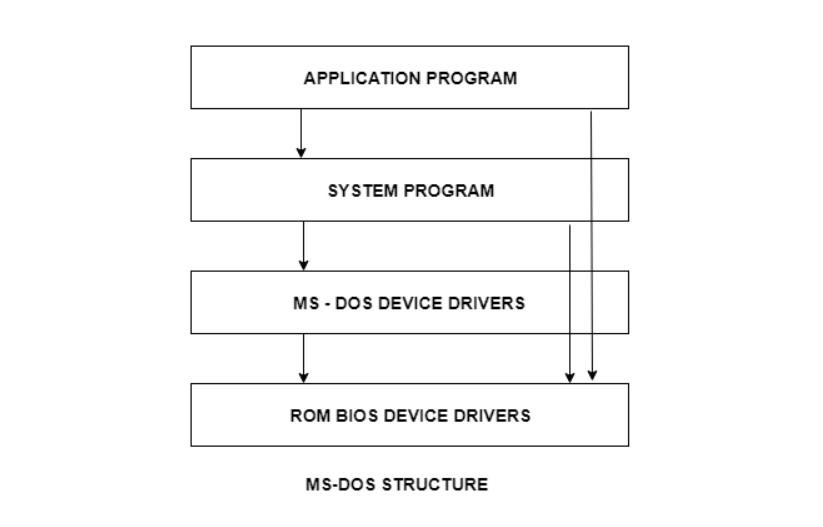
 Data Structure
Data Structure Networking
Networking RDBMS
RDBMS Operating System
Operating System Java
Java MS Excel
MS Excel iOS
iOS HTML
HTML CSS
CSS Android
Android Python
Python C Programming
C Programming C++
C++ C#
C# MongoDB
MongoDB MySQL
MySQL Javascript
Javascript PHP
PHP
- Selected Reading
- UPSC IAS Exams Notes
- Developer's Best Practices
- Questions and Answers
- Effective Resume Writing
- HR Interview Questions
- Computer Glossary
- Who is Who
MS-DOS Layered Structure
MS-DOS is an operating system created for personal computers. It was developed by Microsoft. It is a classic example of an operating system with a layered structure. MS-DOS operating system is split into various layers and each of the layers have different functionalities.
Layering provides a distinct advantage in the MS-DOS operating system because all the layers can be defined separately and interact with each other as required. Also, it is easier to create, maintain and update the system if it is done in the form of layers. Change in one layer specification does not affect the rest of the layers. However, the layers in MS-DOS are not that sharply defined and the layer specifications often bleed into each other.
An image that specifies the MS-DOS layer structure is as follows −
The above image contains the layers for application program, system program, MS-DOS device drivers and ROM BIOS device drivers.
Application Program
These programs perform a particular function directly for the users. In other words, these programs provide an application to the end users, so they are known as application programs.
System Program
The system programs are used to program the operating system software. While application programs provide software that is used directly by the user, system programs provide software that is used by other systems.
MS-DOS device drivers
Most of the device drivers on MS-DOS are part of the operating system such as keyboard and screen console drivers, floppy and hard-disk drivers, printer port driver, serial port driver etc.
ROM BIOS device drivers
The BIOS drivers are the programs stored in the EPROM or EEPROM memory chips on the motherboard. These are the basic drivers needed to start the computer system. BIOS stands for Basic Input/Output System.


